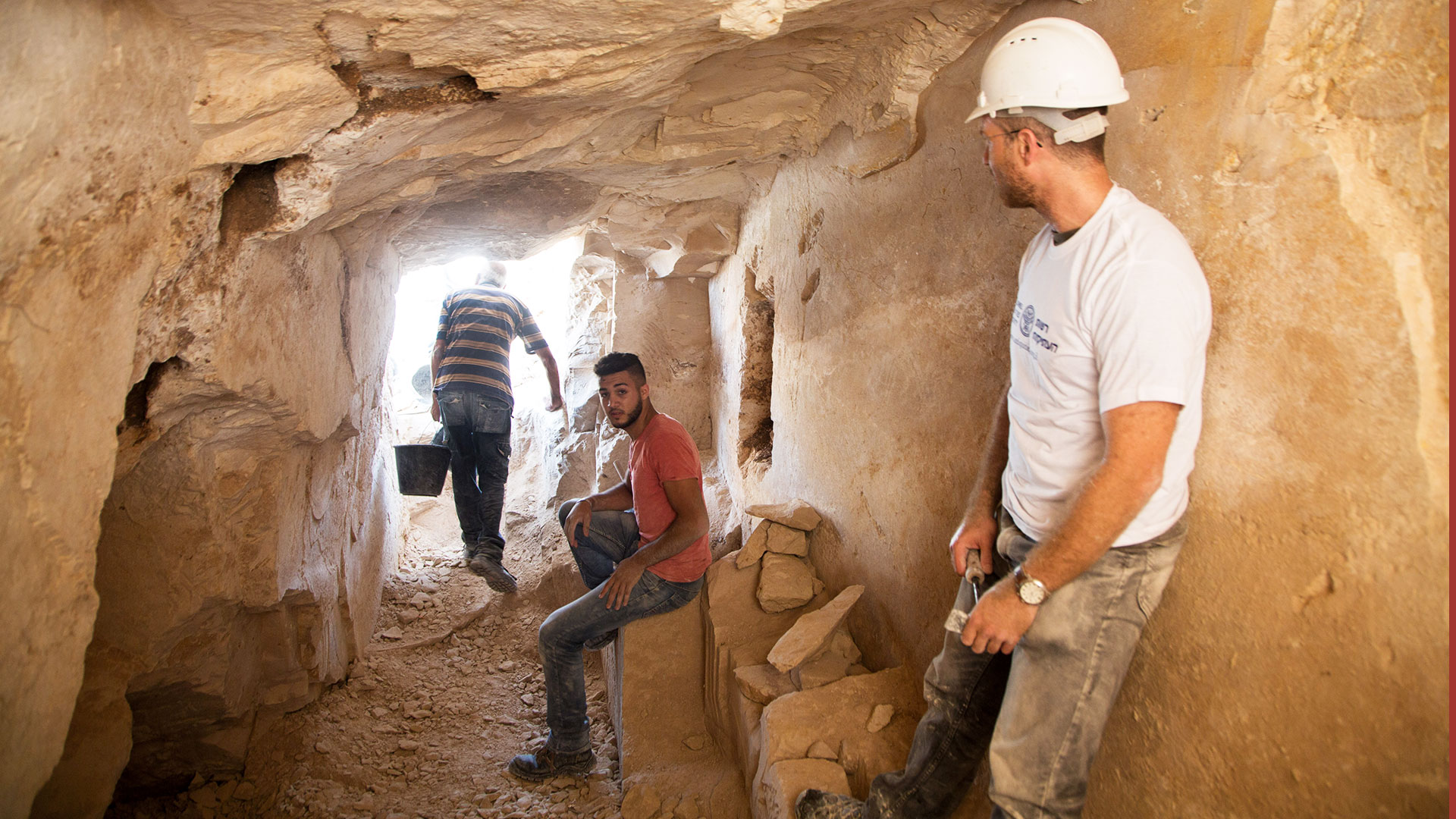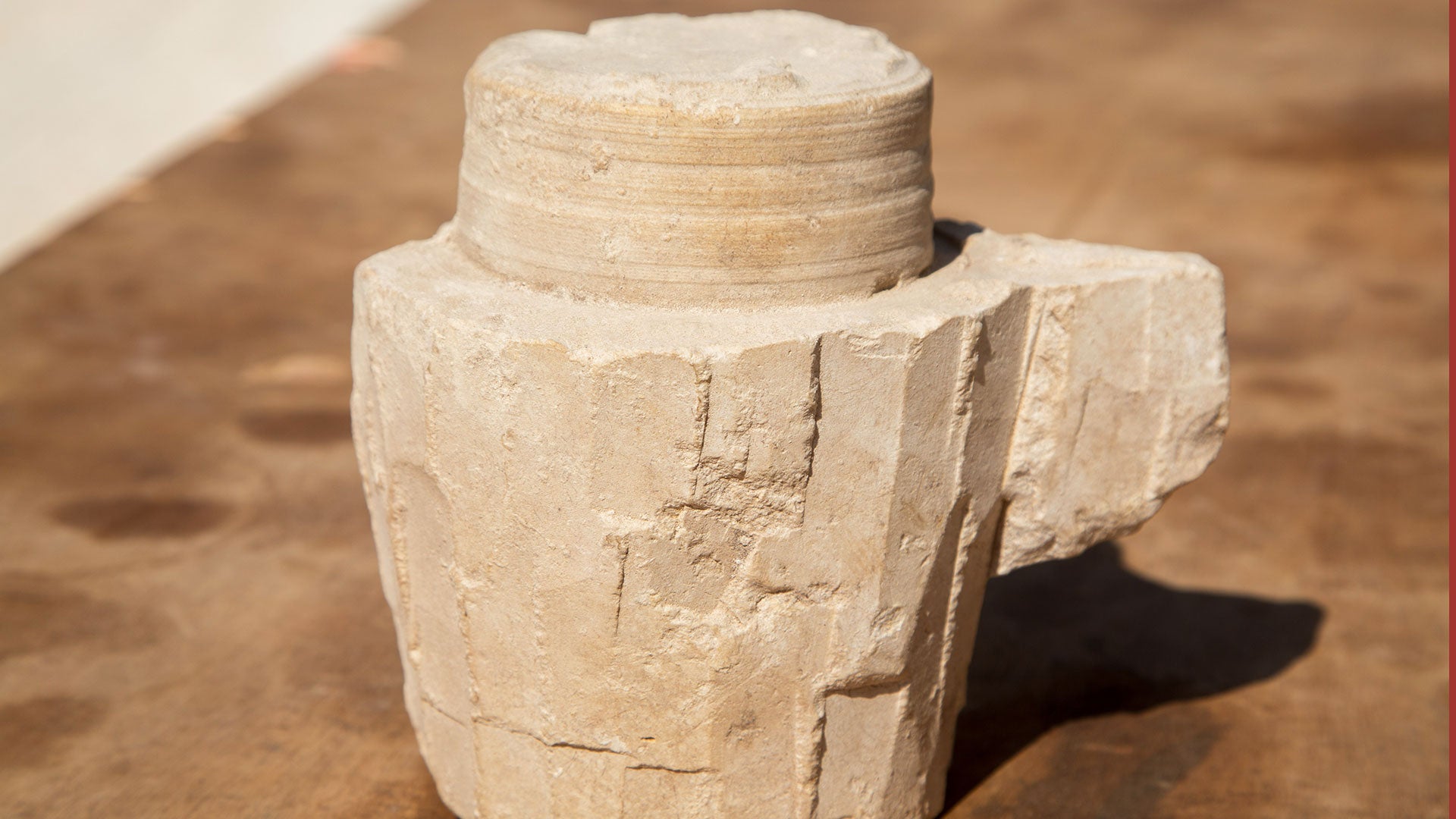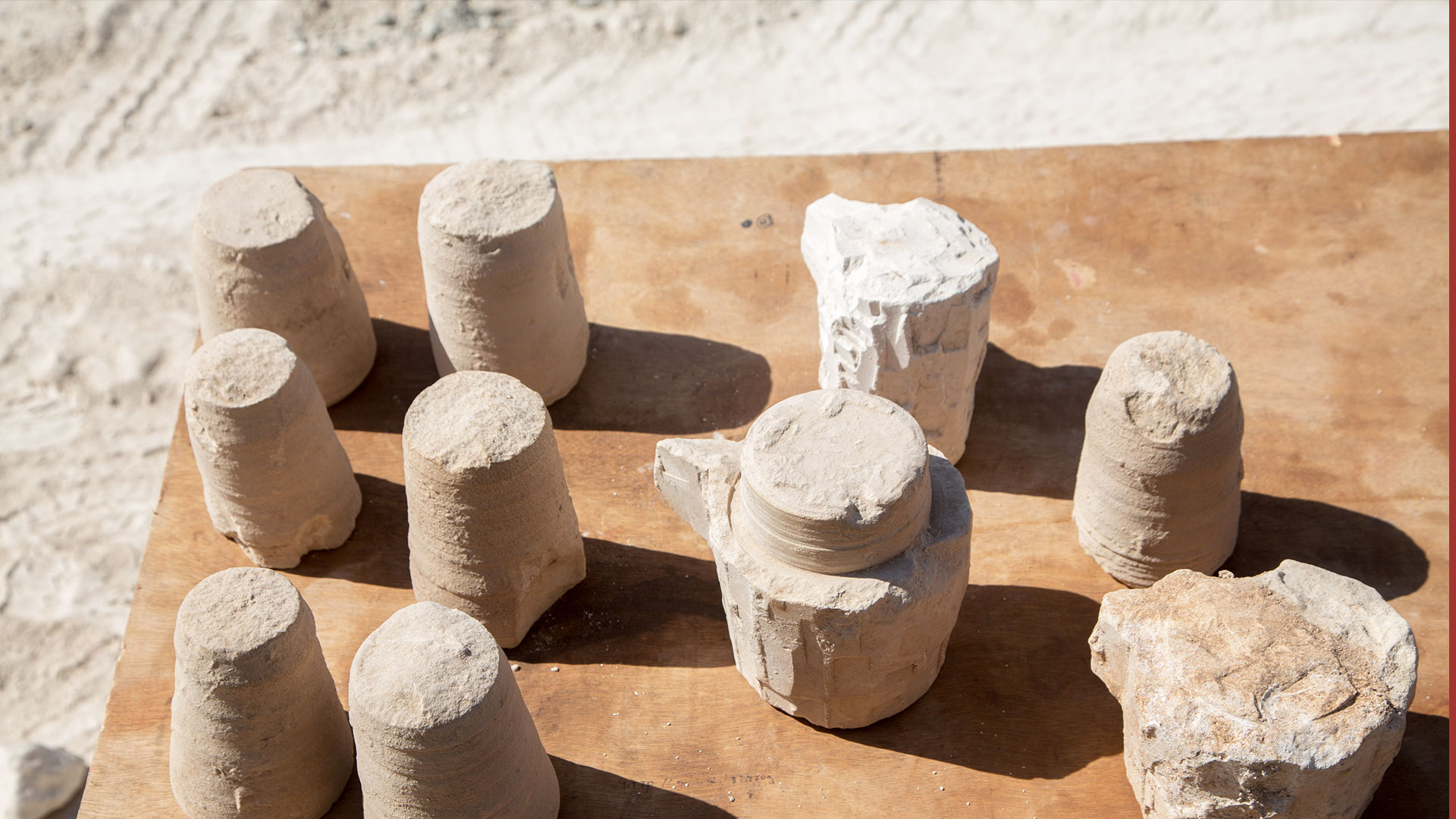Archaeologists Unearth Roman Era Stone Water Pots near Biblical Cana
JERUSALEM, Israel – Israeli archaeologists are excavating a 2,000-year-old stone quarry and production center for stone vessels not far from the ancient city of Cana where Jesus performed his first recorded miracle, turning water into wine.

Archaeologists uncovered the small cave during construction work for a municipal sports center by Reina's local council. They are excavating two sites at Reina, about a kilometer (half mile) apart, just south of the modern village of Kafr Kanna in the lower Galilee. Scholars believe Kafr Kanna may be the site of biblical Cana.
"On the third day there was a wedding in Cana of Galilee, and the mother of Jesus was there. Now both Jesus and His disciples were invited to the wedding. And when they ran out of wine, the mother of Jesus said to Him, 'They have no wine...Now there were six stone water jars set there for the Jewish custom of purification, containing twenty to thirty gallons each." ( )
The excavations at Reina are the third and fourth such workshops uncovered to date in Israel. The other two were discovered decades ago near Jerusalem.

Excavation director Dr. Yonatan Adler, who is a senior lecturer at Ariel University, said the discovery attests to the importance of ritual purity in the lives of Galilean Jews during Jesus time.

"The reason for this curious choice of material seems to have been religious. According to ancient Jewish ritual law, vessels made of pottery are easily made impure and must be broken. Stone, on the other hand, was thought to be a material that can never become ritually impure, and as a result ancient Jews began to produce some of their everyday tableware from stone," he said.

Israel Antiquities Authority archaeologist Yardenna Alexandre, an expert in the Roman Era Galilee, says fragments of Roman era stone vessels have been found alongside pottery fragments in both rural and urban Jewish settings over the years.
"The fact that Jews at this time used stone vessels for religious reasons is well attested in the Talmudic sources and in the New Testament as well," Alexandre said. "It is possible that large stone containers of the type mentioned in the wedding at Cana of Galilee story may have been produced locally in [the] Galilee."

Ancient chisel marks covering the walls, ceiling and floor of the cave indicate it was a hewn cave.
Adler explained that the production waste unearthed in the cave indicate workers produced mainly mugs with handles and various sizes of bowls.
"The finished products were marketed throughout the region here in Galilee, and our finds provide striking evidence that Jews here were scrupulous regarding the purity laws," he said.
---
Photos and Video, Courtesy of Israel Antiquities Authority, Samuel Magal



